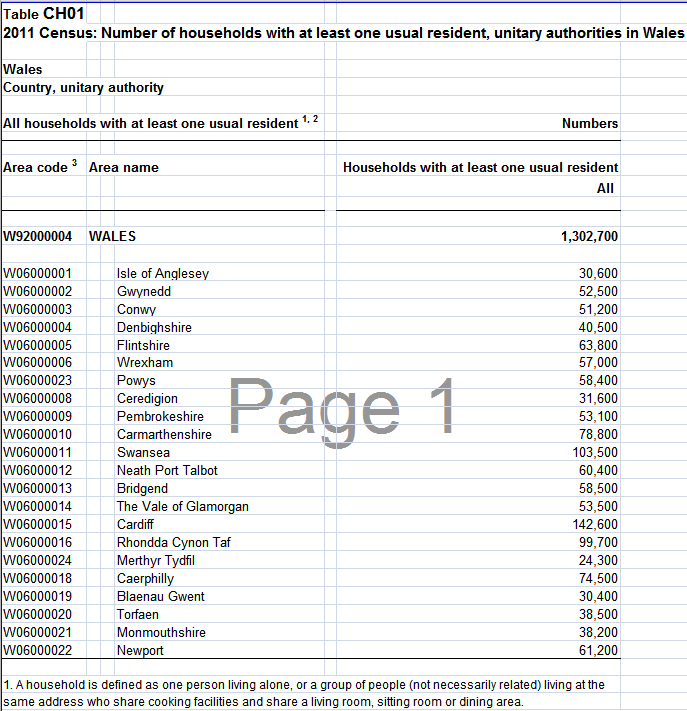I hope I can explain this without it getting too complicated. Here goes . . .
In a number of recent posts I have stressed the importance of household size / composition in determining how many new dwellings will be needed. So I thought I’d better check with the Office for National Statistics (ONS) for the correct definition, which is: “A household is defined as one person living alone, or a group of people (not necessarily related) living at the same address who share cooking facilities and share a living room, sitting room or dining area”. Which means that a group of students sharing a house would presumably be a household, but a retirement or nursing home for elderly people would be a “communal establishment”.
This is important because each household is a separate dwelling. It follows therefore that predicted household size coupled with projected population increase will be used to assess the number of new dwellings needed. The smaller the household size, then the greater the number of dwellings.
Returning to the ONS, that agency’s Table KS101EW, says that when the Census was taken in March 2011 the number of persons living in a household in Wales was 3,011,182. Table CH01, also ONS, tells us that at the Census Wales had 1,302,700 households. If we divide the number of persons living in households with the number of households we have a figure of 2.31 persons per household. Yet in its (2008-based) household size projections, Knowledge and Analytical Services (KAS), an arm of the Department for Communities and Local Government (DCLG) in London, but based in Wales, predicted a household size for 2011 of 2.23.
This difference of .08 may seem unimportant . . . until you remember that it equates to 46,764 dwellings and (x 2.31) a population of 108,025. To put that into perspective, at the 2011 Census there were just 31,600 households in Ceredigion. Also bear in mind that, due to the ONS ‘outsourcing’ household size projections to the DCLG, it is KAS projections that are used to determine how many new homes will be needed in Wales in future years. Clearly, anyone wishing to make Wales plan for more new homes than she really needs has only to underestimate household size.
I understand that new household size projections covering the next 25 years are due out any day. These projections from the KAS will be invalid from the outset if they do not start at 2.31 in 2011, because this figure comes from the Census, it is not guesswork. The new household size projections must also take into account other evidence that suggests a slowing in the rate of household size decline, if not a static household size.
These new projections must then be used to revise Local Development Plans and all other housing need projections in Wales.

O/T
Is it me or are peoople beginning to realise that London isn’t the wealth producer it’s made out to be by our Brit Nat friends?: http://www.theguardian.com/commentisfree/2014/feb/10/public-money-private-wealth-london-north-v-south?CMP=twt_gu
What surprises me is why more people in northern England don’t wake up to this issue and form a political party. Tell people the truth about London and success would be guaranteed. Do it well and neither Labour nor Tories could ever rule again without going into coalition with the northern party. The mere threat of such a party could achieve something.
… and Eric Pickles of Bradford could run it with William Hague as secretary. The AyeUpP
So the present Welsh Bolshevik Labour Government has instructed everyone that Wales needs 323,009 new households by 2033. How many households do you believe they have over projected and how many households does Wales actually need?
Projected population in 2021 (ONS) is 3,198,800. This could be accommodated with 100,000 new dwellings. And I’m allowing for other factors in that figure.
Correction Feb 13: The 2012-based projected population for 2021 is 3,181,000. An increase on the 2011 Census figure of 117,544. The household size at the 2011 Census was 2.31.
Which makes Carl Sargeant’s – i.e. the Planning Inspectorate’s – figure of 331,168 new homes needed an absolute nonsense. This ludicrous figure also makes absolutely clear the real motivation behind these demands.